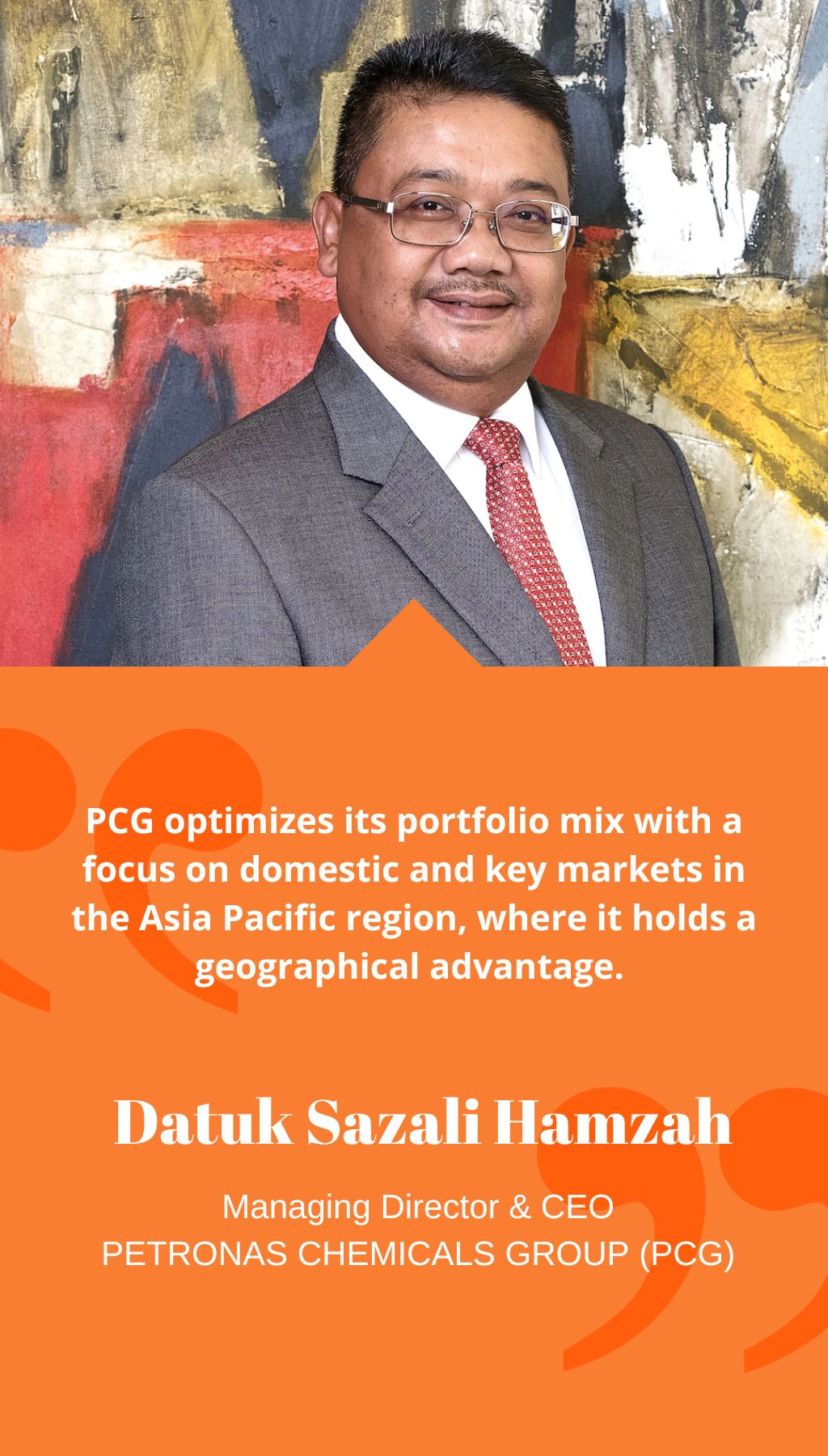
- Malaysia | 20 March 2018

What have been some of the key achievements of PCG in recent years?
In the third quarter of 2017, PCG recorded a higher EBITDA margin of 41% compared to 39.5% in the same quarter of 2016 and 37.6% in the previous quarter. Operationally, PCG achieved a 96% plant utilization rate year-to-date, an improvement from the 85.1% achieved in the same period of 2016. This increase is attributed to improved plant reliability and higher feedstock supply. Additionally, PCG achieved its highest overall sales performance, which helped mitigate the impact of low petrochemical product spreads. Looking ahead, PCG has set clear goals and aims to continue proving its resilience in the face of challenges. The company pursues a strategy of strengthening its basic petrochemicals portfolio while selectively diversifying into derivatives, specialty chemicals, and solutions.
Around 37% of PCG’s revenue is sourced in Malaysia, with other markets, especially Southeast Asia, representing the rest. How does PCG envision further international expansion?
PCG optimizes its portfolio mix with a focus on domestic and key markets in the Asia Pacific region, where it holds a geographical advantage. The company has established and operationalized two overseas marketing subsidiaries in Thailand and China, which are important export markets accounting for 16% and 9% of PCG’s revenue, respectively. These overseas subsidiaries enhance PCG’s presence in these key markets and facilitate customer intimacy through close customer relationship management and direct interaction. Furthermore, PCG has incorporated a new marketing subsidiary in Jakarta, which is expected to be fully operational by early 2017, reflecting the company’s intention to expand its market reach in Indonesia. PCG also has representative offices in Vietnam and the Philippines and aims to develop strategic collaborations with customers in other markets in Southeast Asia and the Asia Pacific, including Australia and New Zealand.
As a predominantly downstream company, how has the current low price environment for commodities affected PCG’s plans?
PCG approaches projects selectively, ensuring they are executed in a cost-efficient manner. The current low oil price environment serves as a reminder and an opportunity for the company to be more prudent in reducing its operational costs. Cost optimization and doing more with less are PCG’s greatest priorities. Additionally, the company focuses on planning and prioritizing projects. Sanctioned projects will proceed as planned, with funds allocated accordingly. PCG believes that it is crucial to focus on growth projects that are instrumental in establishing the company as a leading petrochemical player in the Asia Pacific, rather than pursuing “nice to have” projects.
What are PCG’s ambitions and key objectives for the year ahead?
PCG’s strategy revolves around strengthening its basic petrochemicals portfolio while selectively diversifying into derivatives, specialty chemicals, and solutions. To achieve this, the company aims to be cost-effective, maintain reliability, and uphold world-class standards in its operations. Currently, PCG has a nameplate capacity of 10.8 million tons per annum (mtpa) of basic petrochemicals products, and by 2018, it plans to increase production capacity by an additional 2 million to reach 12.8 mtpa. This expansion will further strengthen PCG’s basic petrochemicals, particularly in ammonia and urea, while incorporating some specialty chemicals into its portfolio. Despite the current low market environment for ammonia and urea, PCG anticipates long-term growth in urea consumption, driven by increasing population, particularly in Southeast Asia and the Asia Pacific region. Beyond 2020, PCG aims to assess opportunities in downstream derivatives and specialty chemicals at various locations, including the PIC project, Kertih, Kuantan, and East Malaysia. These initiatives will contribute to PCG’s vision of becoming a leading player in the derivatives and specialty chemicals market.














